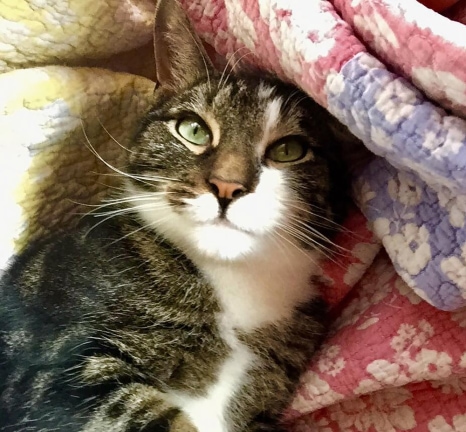
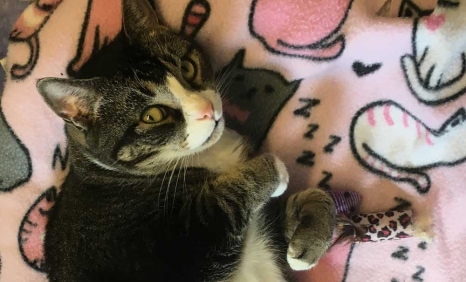
Treat your cat like a beloved family member. Trust, love and kindness are crucial for his or her well being. Give them time to adjust to you. Cats live between 15 and 20 years. Remember that she will grow old and give her the love and care to get through that journey.
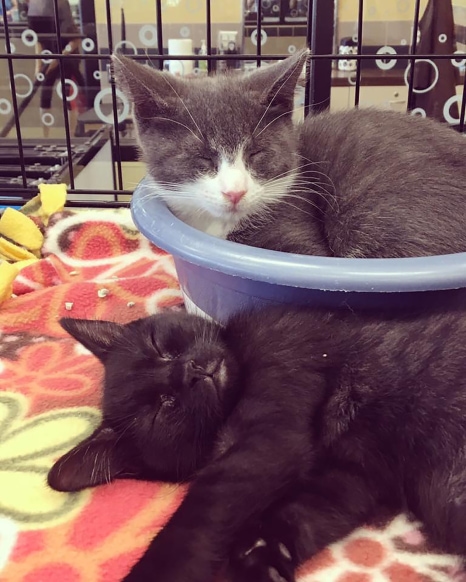
Clumping litter is designed to form a hard, insoluble mass when it gets wet. It also produces a fine dust when stirred (as when a cat scratches around to bury a recent deposit). And clumping litters absorb many times their weight in fluids. This occurs inside cats and kittens when they ingest the litter dust.
When cats or kittens use the litter box, they lick themselves clean; anything their tongues encounter gets ingested. Kittens especially tend to ingest a lot of litter when they are first learning to use the box.
Once the litter is inside a kitten or cat, it expands, forming a mass and coating the interior, thus, causing dehydration, drawing fluids of the cat or kitten, thus compounding the problem by preventing and absorption of nutrients of fluids.

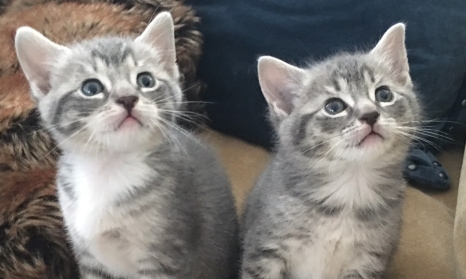
And the problem extends beyond cats. Dogs get into the litter box for "snacks" and they ingest the litter too.
"Sodium bentonite, a naturally swelling clay, is often added as an extremely effective clumping agent. When liquid is added, bentonite swells to approximately 15 times its original volume. But because sodium bentonite acts as an expandable cement would, litters containing sodium bentonite should never be flushed; when they expand they can block plumbing.
There's a little cat recovering from surgery after being hospitalized for almost a week. The "breakaway" collar she was wearing didn't break away when it slipped under one of her front legs and cut into her body as she struggled. If she weren't found in time by her owner, she would have died in her incapacitated and infected condition.
Cats choke to death when their collars catch on projections, even at home. All cats adopted from Pet Rescue are micro-chipped for identification.
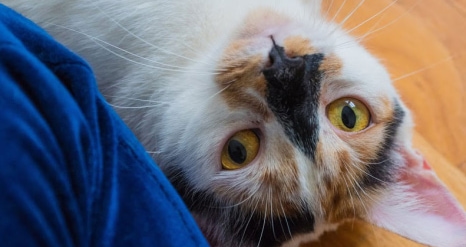

For many cat owners, their pet's natural impulse to scratch can become a problem. De-clawing may at first seems like a logical solution. However, de-clawing creates more problems than it solves.
Physical and emotional complications may arise from this procedure.
De-clawing is a painful amputation of the entire first digit, not just the nail. Imagine the equivalent on your hand.
Cats without claws have lost their first line of defense. Less able to protect themselves, they cannot fight off other animals or escape from a dangerous situation. Declawed cats may become biters, because they can no longer use their claws as defense.
Finally, de-clawed cats may stop using their litter boxes. Some cats apparently associate the pain they feel in their paws when trying to cover their waste with the litter box itself. These cats may seek a less painful place to urinate, such as a carpet or sofa.
There are several good alternatives to declawing. Strategically placed scratching pads or posts, "soft paws" which are caps that go over the cat's claws, and clipping the claws on a regular basis.
Cats, whose owners smoke, are to three times as likely to develop lymphoma, a form of cancer, as cats living with non-smokers.
The doctor who did the study said cats in many ways were better subjects than people for studying second-hand smoke, because cats basically hang around inside the house, so they don't get exposed to as many environmental hazards. And, he said, you can often smell the smoke on their fur, and when you consider that they're grooming all the time with their tongues, they're probably getting a fairly significant dose.
The researchers, headed by Dr. Antony S. Moore of the Tufts Vet School, found not only that the higher risk of lymphoma is directly related to how much smoke is in the house and how long the
cat is exposed.
-from the NY Times 8/16/02
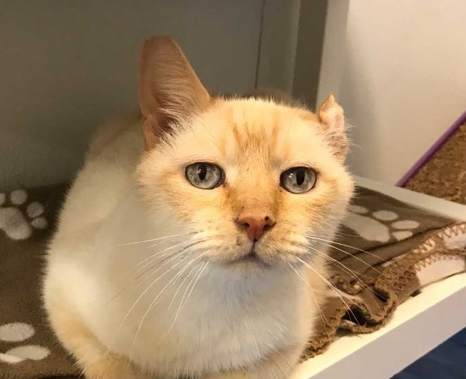
In order to make the transition for your feline friend as easy and successful as possible, we have put together some guidelines for you.
Please try to put yourself in the cat’s position. Coming to a new home is rather stressful. Give the new cat some time to adjust. Confine him to one room for the first 5 days so he will not be too overwhelmed. Eventually you can let your new friend out – supervised by you for the next several days.
When first placing the cat in the room, show him the kitty litter box. If you are dealing with a kitten, you might event want him to walk around in it a bit so he understands that this is a litter box. He may have used a different litter than yours and the smell may be different. Be sure to leave both food and water (kittens usually prefer wet food) and change the water daily. Do not feed milk to a cat or kitten, as it is difficult to digest.
Do not be surprised if the kitten or cat hides. This often happens. If the cat is hiding, let him do so for the first day or two. If he still does not come out, you can start using string toys and small balls to entice him. Run a string toy along the edge of a bed/dresser a few times. Most cats have a hard time resisting this move. Play with the cat 10- 15 minutes each day (or more if you have the time). Playing helps cats relax. It is also great exercise. Eventually, your new adoptee will start to venture out from under the bed/furniture. Most cats will come out during the first few days, but this process can take up to 2-3 weeks with very shy animals.


Put the new cat in a carrier and bring him to your cat. Let them sniff each other. Your cat may not initially like the newcomer. After all, this is his house. Keep your new cat in the carrier for about a half hour in the in the kitchen, or where he can best see your family interacting. Then you can put him back in his room. Do the for the next several days. Then, let them be together only when you are around. Pay lots of attention to your cat when introducing the new one. Even cats get jealous. Most animals will adjust to the newcomer within the first couple of weeks.
Put away cleaning and sewing supplies, rubber bands, extension cords, poisonous house plants (see our list on this site) and any small item that a cat could swallow. Don’t use clumping or scooping litter as cats tend to breathe in of lick from their coats the fine powder raised as they scratch in their boxes. It contains sodium bentonite which absorbs moisture in the respiratory and alimentary passages, forming a sticky obstruction.
There are may hazards that can befall outdoor cats. A cat that is running loose can be:
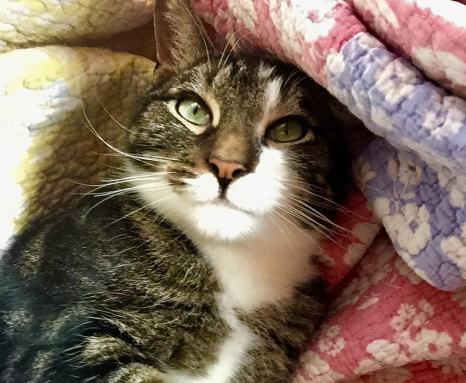
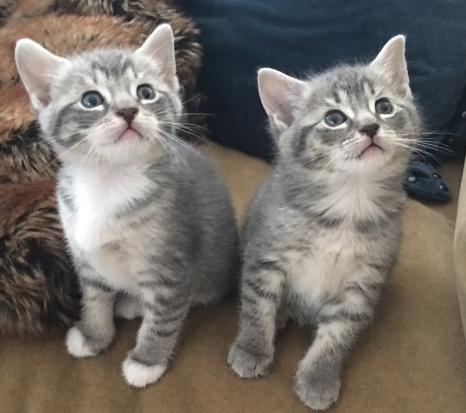
They do, but not in the same way as dogs. Cats need little exercise to keep in shape. The key to their fitness is the isometric -like stretching exercises they do several times a day. You can encourage your cat to exercise and have fun too by providing a scratching post, a climbing tree and exciting toys or another cat. Cats can get fresh air and sunshine near a well screened window or door.